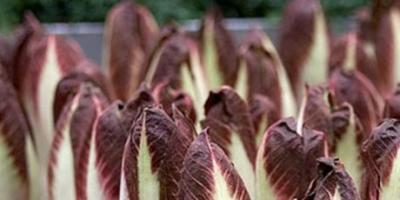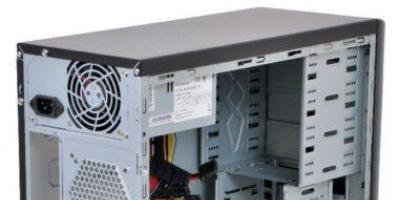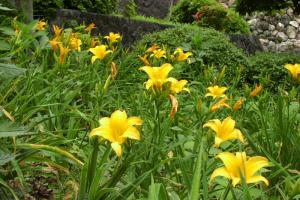Half-timbered houses became one of the hallmarks of medieval architecture. The features of this architectural style become clear from the word itself - the German Fachwerk, consisting of two semantic parts: Fach, which means part, panel, section, and Werk - structure. Medieval technology turned out to be so successful that half-timbered houses - frame house projects, which appeared in Germany in the 15th century, are again popular centuries later.
Construction of half-timbered houses: technologies tested over centuries
Created in Germany, half-timbered houses, the construction technology of which has undergone virtually no significant changes, appeared as a result of an acute shortage quality wood in medieval Europe. Therefore, they created from wood wooden frame, and the space between the beams was initially filled with clay, which was replaced by more durable materials: stone and brick. Another undoubted advantage in the Middle Ages was the ability to quickly restore a destroyed or damaged half-timbered house with your own hands. For the constantly warring Europe of that time, this was very important.
The basis of a half-timbered house is a complex wooden frame consisting of horizontal, vertical and diagonal elements, which are the main feature of the half-timbered architectural style. Diagonal elements - braces located between beams and racks, add rigidity and strength to the structure. To create the frame structure, wood was used - spruce, oak, fir, Douglas fir, and the strength of the frame is achieved through accurate calculation of loads and precise connection of all parts.
The vertical arrangement of the beams has fully justified itself - today you can find houses built more than 500 years ago. The reason for such longevity is due to the well-polished vertical beam rainwater flows down quickly, practically without lingering or being absorbed. And this is the fundamental difference half-timbered houses from traditional log Russian huts, in which the logs were located horizontally and, as a result, absorbed more moisture, which led to a faster gradual destruction of the wood.
Half-timbered houses: revival of popularity
Interest in half-timbered houses was revived in the mid-70s of the last century, primarily due to the emergence of new, technologically advanced materials. Modern tendencies design made it possible to give a new sound and content to what had already become classical methods decoration and construction. And although modern half-timbered houses differ quite seriously from classical examples, they are also popular among lovers of classic European rustic style.
If clay was initially used to fill the space between the beams, then wooden panels, stone or brick, then with the advent of double-glazed windows it became possible to build half-timbered houses with full glazing. Full glass facade it looks very impressive and elegant, while maintaining the visual division of the wall - the main architectural feature of buildings in the half-timbered style.
One of the features of half-timbered architecture is the decorative function of the frame. This is its main difference from ordinary frame houses, in which the load-bearing beams are hidden during finishing. The special arrangement of the frame elements not only visually divides the facade into panels of various shapes, but also creates a bizarre pattern (they are also called “figures”): “man”, “St. Andrew’s cross”, “wild man” and others.
Advice! To make the exterior of the house more decorative and attractive, corner posts are decorated with carving, and the heads of the beams protruding onto the facade are given shaped shapes, for example, a horse’s head, races, etc.
At the same time, modern technologies have made it possible to obtain warm "glass House– installed special, low-emission double-glazed windows allow short-wave solar radiation to pass through, but at the same time acts as an insurmountable barrier to long-wave thermal radiation. As a result, to calculate the heating power of such a house, the formula traditional for stone and concrete houses is often used - 1 W of power per 10 m 2. At the same time, the glass only looks fragile from the outside - in fact, it is made using technology and can reach a thickness of up to 6 mm. In addition, even if suddenly, which is unlikely under normal conditions, such glass breaks, the fragments will not fly to the sides - they will remain hanging on the elastic polymer film.
As a result, using a half-timbered structure, it is possible to create large glazed areas, turning the entire facade into one large glass wall. This makes it possible to realize the effect of merging with nature and the surrounding space. The landscapes that surround the house seem to become part of the interior.
Another reason for the increased popularity of half-timbered houses was the use of glued timber instead of ordinary wood, which made it possible to build a very strong frame. At the same time, the frame elements (laminated veneer lumber and metal fastenings, which connect the frame elements) additionally act as a decorative part of the exterior and interior of the building. In addition, the durable frame allows you to create any building layout, in which spacious open spaces with external glass walls are adjacent to cozy and quiet intimate rooms inside the building. And since the concept bearing wall» is absent in principle, the entire load falls on the frame, in such a house you can easily carry out redevelopment at any time.
The use of laminated veneer lumber for the frame made it possible to get rid of a number of disadvantages characteristic of natural wood:
- increased fire safety - laminated timber ignites at higher temperatures than ordinary wood. In addition, it does not burn, but smolders, retaining its shape and load-bearing capacity to the last, thereby giving significantly more time than natural timber for the evacuation of people
- no shrinkage - over time, laminated veneer lumber practically does not change its linear dimensions, which allows you to begin internal and exterior decoration immediately after installation of the frame
- immunity to moisture, resistance to mold and fungi
- high strength - according to this indicator, laminated veneer lumber is 2 times superior to solid wood
Half-timbering, that is, a frame house filled with clay or brick, appeared in the 11th century, but the heyday of this technology occurred in the Renaissance, that is, the 15th century. Despite such a venerable age, this technology makes it possible to build very durable and relatively inexpensive houses, distinguished by unusual appearance. In this article we will tell you how to build a half-timbered house and avoid the most common mistakes.
Two types of half-timbered houses
Today you can find two types of houses in this style:
- built using half-timbered technology;
- decorated with half-timbered wood.
In the first case, the house not only looks appropriate, but is also built frame method, then filled with some kind of filler. The basis of such a house is a timber frame coniferous species. It is he who has all the advantages that made houses in this style reliable and popular throughout medieval Europe. There are still houses in this style, whose age reaches 500 years. In the second case, the house can be built from anything, then decoratively decorated in a half-timbered style. Such a house cannot have those positive qualities, which are inherent in original houses, so the only advantage of such finishing is its unusual and stylish appearance.

Materials for a half-timbered house
The best material for the supporting frame is laminated larch timber. It is highly durable and resistant to fungus and mold. Instead, you can use laminated pine timber, which has less good characteristics. As a filler, you can use traditional adobe, that is, a mixture of clay and straw, but we recommend making an analogue of SIP panels from two sheets of wood concrete and some kind of insulation. Instead of wood concrete, you can use a thin board, plywood or oriented strand board (OSB). You can use other materials that meet four basic qualities:
- high strength;
- ease of processing;
- low cost;
- low thermal conductivity.
When building the walls of such a house, you can also use recycled products, for example, organic cellulose insulation. It is made from waste paper, so the cost is low, and the level of thermal conductivity is only slightly higher than that of mineral wool. Another very successful filler material is granules or crumbs of polyurethane foam or polystyrene foam. These materials are also very inexpensive and have a very low thermal conductivity coefficient. In addition, they do not have to be cut, because this material is poured into the cavity. To better understand the design of such a wall, we recommend reading about houses made of double timber.
Foundation
The choice of foundation depends on the materials from which the walls will be made. For walls made of lightweight materials, a screw pile foundation, which we discussed in this article, is best suited. If the walls are heavy, for example, filled with adobe, then a more powerful foundation will be required. In addition, a house built using half-timbered technology is very sensitive to frost heaving of the soil, so the foundation must be lowered below the freezing depth. Otherwise, frost heaving will first tear the foundation and then destroy the integrity of the walls, covering them with cracks and crevices. Walls made of heavy materials - brick, adobe and others - tolerate frost heaving the worst.
Frame and walls
The basis of the frame is vertical pillars installed at a distance of 50–70 cm from each other. At the level of ceilings and windows, vertical beams are tied with horizontal ones, to which the floors are then attached. It is necessary to connect vertical and horizontal beams in half a tree or in a tenon, fixing them with a wooden dowel. If possible, use a connection dovetail and also fix it with a dowel. Braces or inclined beams not only increase the rigidity of the structure, but also give it that unique charm of the houses of old Europe.

The braces must be distributed so that they create a beautiful pattern, so they can be inserted either into small cells or fit into several cells formed by vertical and horizontal beams. The methods for attaching the braces to the beam are the same as for the junction of vertical and horizontal beams. Fixation with a dowel will make the entire structure more durable and reliable. As a frame reinforcer, use metal corners that are attached to vertical and horizontal corners. If you find corners the desired shape, then strengthen the braces with them. While creating the frame, prepare places for installing windows and doors.
In the original houses built using half-timbered technology, vertical pillars were dug directly into the ground or placed on large stones. However, it is more practical to do the same as when constructing a regular frame house, that is, attach the frame (bottom) beam to the foundation or grillage, and then attach the vertical beams to it. This method of fastening is especially preferable in regions with:
- high groundwater level;
- frequent and heavy precipitation;
- very low winter temperatures;
- strong winds;
- unstable ground.
Before assembling the frame, treat the entire beam with hydrophobic impregnations and an antiseptic, and also consider a method for attaching the filler. A lattice made of branches or thin slats is well suited for adobe and wood concrete mass. To insert such a lattice, you need to make a groove in each beam along the diameter or width of the branches or slats, then simultaneously assemble the frame and insert the slats into the groove. You can also use a steel mesh with small cells (up to 5x5 cm).
The walls of a half-timbered house must meet three basic requirements:
- be slightly thinner than timber;
- have sufficient strength;
- have low thermal conductivity.
Adobe and wood concrete walls are the most correct in terms of style, but they retain heat worse than a sandwich made of insulation and two facing slabs. Therefore, you will have to decide for yourself what is more important to you – reliability or reduced heating costs. Walls made of wood concrete and adobe will need to be caulked after drying, because cracks will appear between them and the timber. In the summer, when the timber dries out as much as possible, these cracks will increase. The same caulking methods apply to houses in the half-timbered style as for conventional log houses. To reduce the amount of shrinkage of the frame, and hence the size of the cracks, it is necessary to use well-dried laminated veneer lumber, treated with reliable hydrophobic preparations. In addition, it is necessary to repeat the treatment of all frame beams with such preparations every 2–3 years.
Windows, doors and ventilation
Modern plastic windows fit harmoniously into the exterior of a half-timbered house. However, they cannot be fixed in the same way as in concrete or brick houses. To install windows and doors, you need to make a frame, which we talked about in the article (Window in wooden house). If you install windows and doors without frames, then under the influence of seasonal shrinkage and swelling of the frame beams, the windows and doors will either jam, or more gaps will appear between them and the frame, which are very difficult to deal with. In addition, it is necessary to consider the ventilation system, because a half-timbered house, unlike a wooden one, cannot independently remove excess moisture outside and discharge it into the atmosphere. Therefore, lack of good ventilation leads to mold and rot.
Floors, ceilings and roof
External and internal finishing

The outside of the half-timbered house is carefully caulked, then the walls are painted light colors, and the frame bars are dark. This creates a unique flavor of ancient half-timbered houses. When painting timber, it is advisable to use vapor-permeable paints; this will reduce the likelihood of rot or mold appearing in the wood. To paint walls, you can use any paint, because neither adobe or crossbow, nor moisture-resistant plywood or OSB are afraid of any paints. The inside of such a house can be finished in any way, for example, covered with plasterboard or clapboard. You can also plaster the entire inner surface home or maintain the original appearance of the walls.
Conclusion
Half-timbered houses still retain their popularity and medieval ambience. They are simpler and cheaper to manufacture than a full-fledged house made of timber and are comparable in price to inexpensive frame houses. However, you are unlikely to be able to sell such a house quickly and expensively, because most people prefer traditional brick, concrete or wooden houses, but if you are building it for yourself and your family, then it will serve you for hundreds of years.
The technology for building half-timbered houses came to us from the Middle Ages. Although the first buildings of this type appeared in the 12th century AD, they became most widespread in Germany in the 15th century, and then became popular throughout Northern Europe. This technology is still used in the construction of buildings in many countries. It has stood the test of time for several centuries. If you decide to build a half-timbered house with your own hands, then in this article we will describe many of the nuances that you need to know before making a final decision.
Peculiarities

The German word Fachwerk translates as “frame, lattice structure,” which already gives an idea of design feature of this building. The technology for building such a house is the construction of a frame from wooden beams, which is the supporting structure. Vertical and horizontal racks are combined by beams under different angles, which gives the structure rigidity and strength. Monolithic walls are not erected, since this is how they are obtained when filling the space between the beams various materials. During the Middle Ages, adobe, clay were used for this, and later stone and brick.
The load-bearing beams of such buildings are not hidden, they go out onto the facade and look like decorative element, which gives half-timbered houses their unique and recognizable personality. The frame elements, deliberately highlighted in color, create a whimsical ornament on the building's façade.
Modern reading

Reliability and durability are confirmed by the fact that buildings that are about five hundred years old have been preserved. Interest in this style began to revive at the end of the last century, especially since modern technologies have helped to reinterpret classic examples of such buildings in a new way.
Using laminated veneer lumber instead of conventional wood to make a frame provides many advantages. Its superior strength to wood, greater water resistance, more heat fire resistance, resistance to mold and fungi allow you to get rid of the disadvantages inherent in wooden houses.
Modern technologies have made it possible to create, while observing all the advantages of a half-timbered structure, “ glass House", when the planes between the frame elements are filled with especially strong double-glazed windows.
Benefits of technology
- The aesthetic appeal of such houses is undeniable - they are original, unlike the buildings we are used to.
- Such buildings do not require a strong foundation, which leads to a reduction in construction time and cost.
- The buildings have very little shrinkage, which is due to the light weight of the frame. This allows you to begin external and interior decoration immediately after completion of its installation.
- Since the main vertical load is borne by the building frame, the layout interior spaces not constrained by the need to construct load-bearing walls.
- Construction time is several times higher compared to buildings constructed using traditional methods.
Nuances of building a house

It may seem that building a half-timbered house can be easy and quick, but this is not so. You can often hear advertisements that such construction is carried out by one person in a short time, but do not be deluded by this half-truth, since the rapid construction of such a house is only possible if a team of specialists gets down to business. Moreover, they assemble the frame from parts prepared in advance at the factory. In this case, indeed, your house can be built in just 2 weeks.
If you take up self-execution this work, it is important to realize the limits of your capabilities in order to complete the work you have begun. To do the job correctly, you not only need to know how to use a tool, you need to have one. In addition, you will need to competently perform numerous calculations. Such qualities as accuracy and scrupulousness are necessary, because later it will not be possible to redo it, and there will be no way to cover the flaws with panels. The mood has not changed, and are you ready to continue building on your own? Then study the list of work performed.
Sequence of work

- Depending on the climatic and landscape conditions of the area in which the house will be built, an appropriate project is developed.
- As with any other building, a foundation needs to be made for a half-timbered house. Considering the small mass of the house, we will focus on a shallowly buried strip foundation 50 cm wide by performing calculations on our online calculator. You can also make a different type of foundation, as for an ordinary frame house.
- For the manufacture of load-bearing structures we will use laminated veneer lumber, the size of which must be indicated in the project. Nowadays, buy one construction material won't be a problem. You can also use regular, guaranteed dry timber of the same size.
- If you don’t have the skills for such work, but want to do everything yourself, then it’s better to find or order a project in accordance with your needs, order blanks from a company specializing in the manufacture of half-timbered houses, and then, using the drawings, begin assembly.

- A layer of waterproofing is laid on the foundation, and the beams of the lower frame are laid on top of it.
- Metal anchors are used to attach the beams to the foundation.

- When assembling the frame, it is important to ensure that the parts are completely inserted into the grooves. The joints of the frame parts, which will bear a large load, must be additionally strengthened, for which metal plates, corners or brackets can be used.
- In that part of the building where the walls will be blank, it is necessary to ensure that the depth of the frame frames is sufficient for insulation from cellulose fibers.

- Interior partitions are assembled from smaller timber, about 50×50 mm. Frame dowels are used to secure them to the floor.
- On top vertical bars The longitudinal girders are being installed, to which the floor boards will need to be attached.
- If provided for by the project, crossbars are installed above the interfloor piping.
- The frame of the house is strengthened at the corners with braces, which can be either closed or open.
- Now you can start making the roof.
We briefly described the stages of work on assembling the frame so that you can imagine what you will have to do. Why is a list of work being performed provided, and not step-by-step instruction? Because each house will be structurally different, and there are several assembly technologies. To get acquainted with the construction in more detail, we suggest watching the video.
Video: building a half-timbered house
As you can see, the process of assembling a house cannot be called simple, and it will not be possible to build such a structure alone.
One more distinctive feature There is extensive glazing, so the building differs in its appearance from its predecessors, built centuries ago. Often, when talking about buildings built using half-timbered technology, people call them glass houses.
Video: more details about glass houses
Glazing a house is a separate topic, but due to the design features, a special technology has been developed, which is described in the following story.
Video: glazing of half-timbered frames
So, we can conclude that the construction of a modern glass house Only a team of specialists can perform it efficiently.


If it is a small village house with small windows, then the rigidity of the structure will be ensured by numerous struts, and the openings are sealed with improvised materials - exactly as our great-grandfathers did.
The technology of constructing half-timbered houses is gaining in last years increasingly popular, although mainly in European countries. Nevertheless, “gingerbread” houses, as they are popularly called, still appear here, but not as intensively. The low popularity of half-timbered buildings can be explained very simply: it is a very expensive pleasure. But compared to stone houses, half-timbered houses are still cheaper, and they provide more possibilities in terms of architectural planning.
It is believed that the first “gingerbread” houses appeared in Germany, although similar designs are found in other Western European countries. Thus, in Great Britain, all buildings that were erected in the main city squares were necessarily decorated in the half-timbered style in order to give integrity to the entire architectural ensemble.

The word Fachwerk, literally translated from German, means “sections”, “structure”. In houses made in this style, the facade is divided into two identical cells and is equipped with a rigid, durable frame. The frame cells were filled with a wide variety of materials.
To finally find out what a half-timbered house is, you need to familiarize yourself with German architecture of the late 15th century. Then it was fashionable to make frames from dark wood, mainly oak. These frames consisted of vertical, diagonal and horizontal elements, which were intended not only for decorative purposes, but also to support the house.
At first, the cells were filled with adobe, but soon it was replaced with brick and clay. Ground floor trimmed with stone for protection wooden elements from rotting.

A modern half-timbered house is a combination of long-standing traditions with the latest technological developments. The advantages of this architectural style are undeniable:
- freedom of architectural planning;
- no shrinkage;
- environmental friendliness;
- the use of lightweight foundations and, as a result, reducing construction time;
- energy efficiency;
- application innovative technology finishing.
About the similarity with frame houses
We started building half-timbered houses only in the 70s of the last century, that is, around the time of popularization frame construction. Naturally, modern construction technologies are in many ways different and superior to those used five hundred years ago. From a technology point of view, houses made in this style are practically no different from frame houses.

It is worth mentioning separately such a nuance of style as the construction of glass walls. This technique quickly gained popularity among builders. wooden houses in the lap of nature. It allows you to observe and admire nature around the clock.
Half-timbered buildings - extremely original houses. And if they are built from timber, then they will look like real houses made of wood should - harmonious and cozy.

Having become familiar with the features of this style of architecture, you will most likely ask yourself: is it possible to build a half-timbered house yourself? Theoretically, of course, it is possible, but it is extremely undesirable. Don’t believe the numerous online resources that claim that this is a piece of cake.
In reality, the construction of such a structure is a rather labor-intensive procedure, requiring numerous calculations and accuracy in execution (if there are any flaws left, they cannot be covered with panels). Anyway, below is step by step guide on construction.

About difficulties at work
Advertisements from construction companies say that a half-timbered structure can be built in just two weeks. This is true, but only because houses are built from ready-made parts, calculated and designed on a computer, processed in a factory. In such cases, installation really takes no more than half a month.
The beams (mostly made of oak or Siberian pine) are delivered to the construction site with grooves already cut out, coated with paint and an antiseptic substance - there can be no errors in the calculations. Moreover, even the front panels, which are subsequently installed on the timber, arrive already painted.

Another thing is to build a house yourself. Is it possible not to make a mistake when designing such complex design? After all, many of us have not even heard of most of the specific terms related to fachwerking. For example, about corner mana or wildermann.

It also requires rich spatial thinking to visualize the entire structure as a whole.
Note! Here are the main reasons why it is better to build a half-timbered house from a ready-made kit. In addition, such kits are quickly installed.
But if you are still determined to try your hand, then follow the algorithm exactly.
Work algorithm
- Opt for a strip foundation of shallow depth. The width of the foundation should not exceed 50 cm, since future loads on it will be minimal.
- For load-bearing structures (roof, wall frame), use exclusively laminated veneer lumber. If for one reason or another you were unable to get it, then you can get by with ordinary dry timber with a cross-section of 15x15 cm.
- Lay down bottom trim from the timber onto the foundation on top of the waterproofing layer. Use iron anchors for fastening.
- Connect all elements into a tenon. Knots subject to increased load are further strengthened with metal plates, corners or staples (if desired, you can use studs instead).
- Increase the depth of the frame frames in those places where you plan to install blank walls for a layer of insulation. For internal partitions in the house, use smaller beams - 5x4 cm and 5x6 cm. Attach them to the floor using frame dowels.
- The best option for insulation material in this case is cellulose fiber (it is produced in the form of mats of various sizes and thicknesses).
- Install longitudinal purlins on the cross beams. Install floor boards on top of the purlins.
- If required, install a crossbar (slightly above the level of the interfloor piping).
- Strengthen the half-timbered frame at the corners with braces (the latter can be open or closed).
- As roofing It is recommended to use ceramic tiles - this material is ideal in this case.
Even from such a superficial guide, it becomes clear that building a half-timbered structure on your own is quite difficult.

For half-timbered houses they build gable roof, but without an attic. For additional comfort, equip your roof with wide overhangs - in the summer they will effectively protect you from the heat. In addition, it is excellent protection against precipitation. To darken the house itself, use curtains and blinds.
If opportunities allow, you can protect yourself using more modern technologies. So, you can use electrochromic glass for walls, the transparency of which can be changed at the touch of a button.
Heating and ventilation system
Heating in such a house must be modern. It can be:
- solar collectors;
- recuperators;
- fuel pumps.
The best option for heating a house would be a heated floor system, since there will be practically no space for radiators due to large quantity glass You can also install a fireplace as an additional heat source, preferably cast iron and with a closed firebox, surrounded by heat-resistant glass.
For ventilation, use the so-called Canadian well.

Ventilation "Canadian well"
It turns out that you can make a half-timbered house completely autonomous.
As a conclusion
Finally, we note one more thing technological merit houses of this kind - they can be built on any site, regardless of the type of soil. Of course, the depth of groundwater, its movement, as well as the depth of soil freezing play an important role in this.

A half-timbered house is truly the dream of many. Such houses have a magnificent view, elegance, high-quality European design, increased durability and many functions - an ideal alternative to a busy and noisy city.

And in conclusion - a short but informative video about construction one-story house in half-timbered style. Find out how to find comfort while saving as much as possible.
Video - One-story half-timbered house
If you don’t know what half-timbered architecture is, then you should remember the characteristic german houses, which appeared in the Middle Ages, but are still popular today. This style is characterized by facades with characteristic dark timber paneling and light wall fillings. Because of the beauty and organic nature of this style, half-timbered construction technology still remains popular in Germany and the countries of Northern Europe.
Properties of modern half-timbering
The construction of houses using half-timbered technology can be confidently classified as frame house construction. In fact, this is one of its varieties. In this case, the functions of load-bearing structures are performed by a frame made of wooden beams. Glued laminated timber is ideal for the frame, as it can easily withstand various deformations. To connect frame elements in the corners and among themselves, special methods are used that give additional rigidity to the entire structure.
Important: the main feature of this style is that metal fasteners are not used to connect the frame elements. Beams and beams are connected using dowels, wooden dowels and other wood products.
A half-timbered frame house can be built from different wall materials. In the Middle Ages, adobe was used to make walls. Today, brick, OSB, and sometimes glass are used to fill the wall structure between the beams. In principle, any material can be used, since the wall itself does not serve as a load-bearing structure. The entire load falls on the frame. A characteristic feature of the style is that the frame is not hidden in the wall structure, but rather is put on display, being an architectural element. Most often, frame beams are made in contrasting dark color against the backdrop of light, sometimes white walls.
The half-timbered house is very warm. This is achieved through the use thermal insulation materials in wall construction. An additional advantage of such buildings is their virtually unlimited planning possibilities. Since the wall does not serve as a load-bearing structure, partitions and partitions can be easily removed, moved, changing the layout.
The half-timbered technology of building a frame house is quite complex due to the peculiarities of the installation of the frame. However, if you have certain skills in working with wood, you can easily build such houses yourself. In addition, spatial thinking and knowledge of spatial geometry will not be superfluous.
Advice: it is better to build half-timbered houses from a ready-made house kit. If you want to get a high-quality, strong and durable structure, then it is better to entrust the work of assembling the house to professionals.
Advantages and disadvantages

A frame house in the half-timbered style has the following advantages:
- The main advantage of such buildings is their aesthetic appeal and difference from others. frame buildings. Such houses should be chosen by those who want their home to stand out from the general development with its originality and unusual beauty.
- To build any frame house, including a half-timbered one, powerful foundation structures are not needed. A shallow strip foundation or another structure (column or pile-screw) will be sufficient, depending on the geological features of the area.
- Since laminated veneer lumber or other wood material that has undergone chamber drying is usually used to install the frame, the structure practically does not shrink. For this reason, the installation of windows and doors, as well as finishing the house, can be done immediately after the construction of the frame. Thanks to this, moving into the house will happen much faster than in other wooden buildings.
- Although the frame structures are exposed, engineering Communication, on the contrary, can be very easily hidden inside a wall or floor structure.
Half-timbered houses have some disadvantages, which are also worth mentioning:
- Open wooden structures the frame must be processed periodically protective compounds so that their load-bearing capacity does not decrease. So, you will need fire retardants to protect against burning, antiseptic compounds will help protect the wood from rot and damage by insects, and you will also need solutions to protect from moisture.
- When building such a house in a harsh climate, it is necessary to thoroughly insulate the walls. As a result, the thickness of the wall structure increases, which entails the need to use more massive beams for the frame.
- Regular frame houses will cost less than buildings erected using half-timbered technology.
Installation technology

When installing the frame, a special technology for connecting wooden elements is used, which only professionals can design correctly. Thus, the following types of connections are used:
- mann;
- polumann;
- corner mann;
- wilderman;
- "St. Andrew's cross" and others.
Foundation and frame

Pouring the foundation on the site is carried out independently. In parallel with it, a frame can be manufactured at the factory. It will be much faster if these two operations are performed simultaneously.
After pouring the base and delivering lumber for the frame to the construction site, work is carried out in the following order:
- Horizontal waterproofing is required on the foundation.
- After this, the top trim is made. To do this, a support beam is installed. It must be firmly attached to the base. Anchor bolts are used for fixation.
- Logs are attached to the strapping beam. Rolling boards are laid on the cranial bars fixed to the joists. At this stage it is worth insulating the floor. To do this, waterproofing is laid on the floor structure, and thermal insulation material is placed on top of it in the gaps between the joists.
- The floor is covered with a layer of vapor barrier on top, and a rough covering is laid.
Next, the vertical beams are installed. For joining inclined, vertical, horizontal and spacer beams, a tenon connection option called “warm” is used. For rigid fixation are used wooden dowels. The most common options for warm connections:
- dovetail;
- secret thorn.
Further installation of structures is carried out in accordance with the project, observing the sequence of stages. Simultaneously with the construction of the supporting frame, partitions are made, which are also mounted using frame-frame technology.
Fillers for walls

After the frame construction process is completed, you can begin to fill the gaps between frame elements walls It’s easier to say that the sieve of the walls is being filled.
Stone, brick, cellular concrete elements (aerated concrete, foam blocks, etc.) can be used as fillers. IN modern houses in most cases, wood sheets and slab materials, namely OSB, moisture-resistant plywood, cement-bonded particle boards, lining, gypsum fiber sheets, etc. When choosing a material for walls, it is worth considering that the products must meet the following requirements:
- high moisture resistance;
- excellent strength;
- low specific gravity;
- environmental cleanliness;
- low thermal conductivity.
Important: if you use heavy materials (stone, brick) as wall filler, then this should be taken into account at the design stage, because under such a house you need to lay powerful buried foundations. Foundation calculations must be made taking into account the material of the walls.
When filling the frame, it is worth remembering that from the outside of the walls the frame beams should be visible, that is, the filling material should not completely cover the entire outer surface walls WITH inside can be used at home different variants, here everything depends on the style of the interior.
If you want to build an extraordinary house, then you can use double-glazed windows as wall filler. As a result, you will get maximum natural lighting in the rooms and a panoramic view of the landscape around the house. However, the abundance of glazing does not help retain heat in the house. Even if you put energy-saving double-glazed windows, in areas with harsh winters it won't help keep you warm.
As finishing walls you can use any materials:
- facing tiles imitating brickwork;
- plaster with decorative compounds;
- clapboard covering.
Roof of a half-timbered house

Most often in half-timbered house the usual is done gable roof. It harmonizes perfectly with the general architectural style Houses. Characteristic feature such buildings is the absence attic floor and attic. In addition, half-timbered houses are characterized by wide roof overhangs. They protect the walls of the house well from precipitation, and the rooms from the abundance of sunlight in summer.
The role of roofing can be:
- euroslate;
- soft roll roofing;
- metal tiles;
- corrugated sheeting
Important: due to significant specific gravity It is not recommended to use natural tiles as roofing.
Home interior

Many people who have never been inside a half-timbered house believe that the inside looks the same as the outside. Sometimes the interior of a house is actually decorated in the same style as the exterior. In this case, white tones predominate in the decoration of the room; the style is characterized by a lot of free space and some asceticism.
But besides this, you can use other styles in decorating the premises of such a house. For example, the high-tech style with its abundance of metallic shine and minimalism is ideal for a half-timbered house. Any metal parts, especially forged items, look quite organic in the interior.
Advice: it is worth considering that beams in the interior can be used not only as a decorative element, but also as a basis for hanging shelves, hanging cabinets, installing lighting and other interesting solutions.








